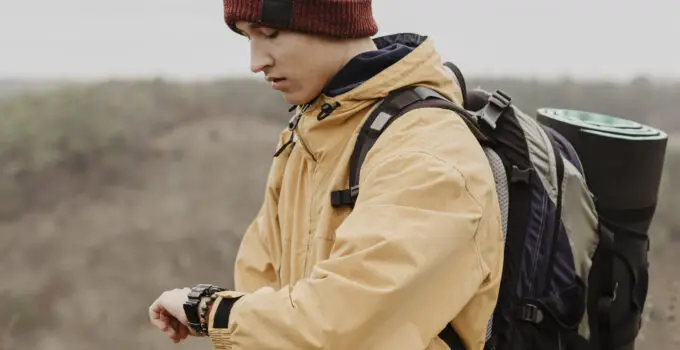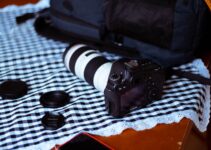Are you tired of lugging around bulky, generic camera bags that don’t quite fit your style or needs?
Ever wondered how to create a camera bag that’s not just functional but also reflects your unique personality?
Let’s dive into the world of DIY camera bags and discover how you can craft your own perfect solution!
In a nutshell, making your own camera bag allows you to tailor it precisely to your gear, preferences, and aesthetic.
From custom compartments for lenses to padded protection for delicate equipment, you’ll have full control over every detail.
Say goodbye to one-size-fits-all solutions and hello to a camera bag designed just for you.
Curious to learn more about the materials, design tips, and expert insights that can elevate your DIY camera bag game?
Here, how to make a camera bag from scratch?
Join us on this journey as we uncover the secrets to creating a personalized, functional, and stylish camera bag that suits your unique photography adventures perfectly.
Why you want to make your own camera bag?
Creating a personalized camera bag offers several advantages.
Firstly, it allows customization to suit specific gear and shooting styles, ensuring optimal protection and organization.
Secondly, a DIY approach can be cost-effective compared to high-end branded bags, especially when repurposing existing materials or finding affordable alternatives.

Additionally, crafting a camera bag provides a creative outlet, enabling photographers to express their style and functionality preferences.
It also fosters a deeper understanding of equipment needs and storage solutions, leading to a more efficient workflow.
Moreover, a homemade camera bag can be tailored to individual comfort requirements, such as ergonomic straps or padding.
Here, is it safe buying chinese geographic camera bag?
Overall, making your camera bag combines practicality, affordability, customization, and creativity, making it an appealing option for photography enthusiasts.
Reasons you need a camera bag
1. Protection and Safety
A camera bag is essential for safeguarding your expensive and delicate photography equipment from potential damage.
Whether you’re traveling, on a shoot outdoors, or simply storing your gear at home, a well-padded camera bag offers protection against bumps, drops, moisture, and dust.
It minimizes the risk of scratches, dents, or malfunctions that can occur when cameras and lenses are not stored securely.
2. Organization and Accessibility
A camera bag helps you keep your gear organized and easily accessible.
With dedicated compartments and dividers, you can neatly arrange cameras, lenses, batteries, memory cards, and other accessories.
This organization saves time and reduces frustration when you need to quickly switch lenses or find a specific item during a shoot. It also prevents clutter and minimizes the chances of misplacing or forgetting essential equipment.
3. Portability and Convenience
Carrying a camera bag makes transporting your photography gear much more manageable.
The bag’s design, often with padded straps or handles, distributes weight evenly, reducing strain on your shoulders and back.
This portability is especially crucial for photographers who frequently move between locations or work in challenging environments.
A well-designed camera bag makes it easier to navigate crowded spaces or uneven terrain while protecting your equipment.
4. Customization and Personalization
Camera bags come in various styles, sizes, and configurations, allowing you to choose one that suits your specific needs and preferences.
Whether you prefer a backpack, shoulder bag, sling bag, or rolling case, there are options available to match your workflow and shooting style.
Many bags also offer customizable interior layouts, letting you adjust compartments and dividers to accommodate different gear combinations.
Here, can you buy just camera bag pads.
5. Weather Resistance
Many camera bags are designed with weather-resistant materials such as nylon, polyester, or waterproof coatings.
These features help protect your equipment from rain, snow, and humidity, allowing you to continue shooting confidently in diverse weather conditions.
Weather-resistant camera bags also provide added peace of mind when working in unpredictable outdoor environments.
6. Security and Theft Prevention
A camera bag with secure closures, such as zippers, buckles, or lockable compartments, helps deter theft and unauthorized access to your gear.
This security feature is particularly important when traveling or working in public spaces where the risk of theft is higher.
Additionally, some camera bags offer hidden pockets or anti-theft features, further enhancing the protection of your valuable equipment.
7. Professional Image and Branding
Using a high-quality camera bag not only protects your gear but also contributes to your professional image as a photographer.
A well-maintained, branded camera bag can convey professionalism and attention to detail to clients and colleagues.
It also serves as a form of branding, showcasing your commitment to your craft and the importance you place on caring for your equipment.
13 steps guide to make your own camera bag
Step 1: Gather Materials and Tools
Start by collecting the necessary materials and tools for making your camera bag.
You’ll need durable fabric (such as canvas or nylon), foam padding, a sewing machine or needle and thread, zippers or closures, buckles, straps, and any additional accessories like D-rings or clips.
Choose materials that are sturdy and water-resistant for optimal protection.
Step 2: Design Your Bag
Sketch out a design for your camera bag, considering the size and layout of compartments needed for your camera body, lenses, accessories, and personal items.
Plan for padding to protect your gear and pockets for organization. Take measurements carefully to ensure a proper fit for all your equipment.
Step 3: Cut Fabric and Padding
Using your design measurements, cut the fabric pieces for the bag’s exterior, interior lining, and any pockets or dividers.
Cut foam padding to fit the dimensions of each compartment and pocket, providing ample cushioning for your camera gear.
Step 4: Sew Exterior Panels
Begin assembling the bag by sewing together the exterior panels. Use a strong thread and reinforce seams to ensure durability.
Leave openings for pockets, zippers, and closures as per your design.
Step 5: Attach Zippers and Closures
Install zippers or other closures on the appropriate panels of the bag. Double-check alignment and functionality before stitching them securely in place. Add zipper pulls or tabs for ease of use.
Here, what can i use if i dont have a camera bag.
Step 6: Sew Interior Compartments
Next, sew the interior compartments and pockets according to your design.
Incorporate foam padding within these compartments to provide cushioning and protection for your camera and lenses.
Step 7: Add Dividers and Pockets
Insert dividers into the main compartments to create separate spaces for different camera gear.
Sew pockets onto the interior panels for storing accessories like batteries, memory cards, lens caps, and cleaning cloths.
Step 8: Attach Straps and Handles
Attach sturdy straps and handles to the bag for carrying convenience.
Use reinforced stitching and secure attachment points to ensure the straps can support the weight of your gear without tearing.
Step 9: Incorporate Additional Features
Add any desired features such as D-rings for attaching accessories, clips for securing tripods or water bottles, or loops for hanging the bag on hooks or pegs.
These extras enhance the bag’s functionality and versatility.
Step 10: Test for Fit and Functionality
Before finalizing the assembly, test the bag for fit and functionality.
Ensure that all compartments accommodate your camera gear comfortably and securely. Test zippers, closures, and straps to verify ease of use and durability.
Step 11: Reinforce Seams and Stress Points
Reinforce seams, especially at stress points like corners, handles, and attachment points for straps.
Use double stitching or bar-tacking to strengthen these areas and prevent seam failure over time.
Step 12: Add Personal Touches
Consider adding personal touches to your camera bag, such as embroidered initials, decorative patches, or a custom label. These details not only personalize the bag but also add a unique flair to your gear.
Step 13: Final Inspection and Use
Complete a final inspection of the camera bag, checking for any loose threads, uneven stitching, or overlooked details.
Once satisfied with the quality and functionality, start using your homemade camera bag and enjoy the convenience and satisfaction of a custom-crafted accessory.
Related faq’s
What can I use instead of a camera bag?
Instead of a traditional camera bag, you can use alternative options to carry and protect your camera gear.
A padded insert or divider system can be placed inside a regular backpack or messenger bag, providing cushioning and organization for your equipment while utilizing a bag you already own.
Dedicated camera wraps or sleeves offer lightweight protection and can be used to wrap individual camera bodies or lenses before placing them in a larger bag or backpack.
Waist packs or belt systems are compact options for carrying essentials during short photo outings.
Additionally, some photographers opt for hard-shell cases or foam-padded cases designed for specific camera models, offering robust protection during travel or outdoor shoots.
These alternatives cater to different preferences, styles, and situations while providing versatility and cost-effectiveness.
How to make a camera lens bag?
To make a camera lens bag, gather sturdy fabric, foam padding, a sewing machine or needle and thread, and a zipper or closure.
Cut fabric into rectangular pieces, ensuring they’re large enough to accommodate the lens.
Sew two pieces together, leaving one side open for the lens. Attach foam padding inside for protection.
Add a zipper or closure to the open side for easy access. Optionally, include a handle or strap for carrying convenience. Customize size and padding based on lens dimensions.
This DIY lens bag provides cushioning and protection for your camera lenses during storage and transport.
Can I use any bag as a camera bag?
While any bag can technically hold a camera, not all bags provide adequate protection or organization for camera gear.
Dedicated camera bags offer padded compartments, dividers, and weather-resistant materials designed specifically for cameras and lenses.
Using a regular bag without these features risks damage from impacts, moisture, and scratches.
However, you can enhance a non-camera bag’s suitability by adding a padded insert or divider system designed for camera gear.
Ultimately, it’s crucial to prioritize protection, organization, and convenience when selecting a bag to carry your valuable camera equipment.
How to pack a camera without a camera bag?
To pack a camera without a camera bag, wrap it securely in a soft cloth or microfiber towel to protect against scratches.
Place the wrapped camera in a padded case, such as a small pouch or sleeve designed for electronics. Ensure the case provides enough cushioning to absorb shocks.
If possible, place the case in a larger bag or backpack with soft items like clothing to add an extra layer of protection. Avoid packing the camera near heavy or sharp objects.
This method helps safeguard your camera while traveling or when a camera bag isn’t available.
Conclusion:
To make your own camera bag, start by choosing a durable and padded material, like canvas or neoprene.
Measure and cut the fabric to fit your camera and accessories.
Sew the pieces together, adding compartments and straps as needed. Customize with pockets and closures for a functional and stylish DIY camera bag.






